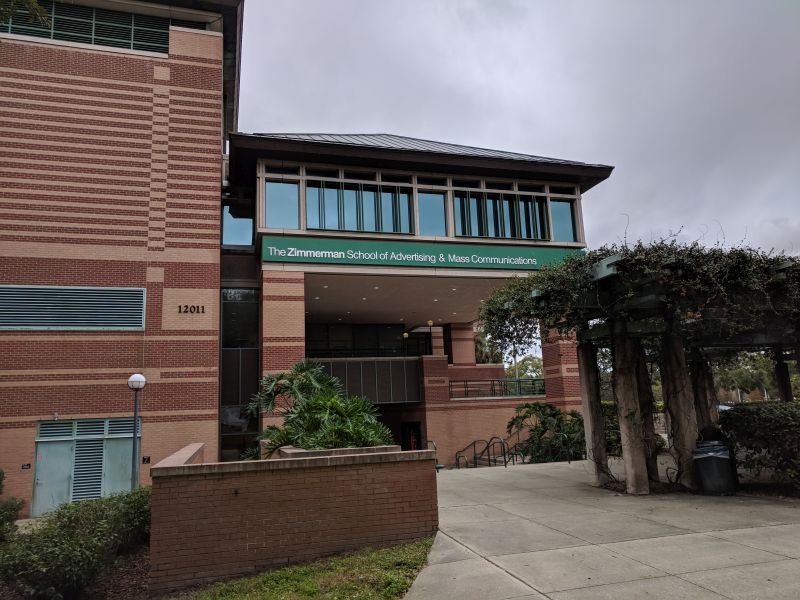The University of South Florida was building out a new laboratory and education center that required significant acoustic treatment. While the flooring was hard and reflective, the ceiling did have some absorptive ceiling tiles, with an NRC rating above 0.5. In order tor reduce reverberation in the space, the architect specified wall-to-wall acoustic panels. These panels were large, spanning from 4″ off the ground up to the acoustic ceiling tile grid, and they completely covered the 20′ wall span.
It should be noted that the Acoustical Fabric Wall System is generally the preferred method for acoustically-treating an entire wall, especially when there are wall penetrations. However, due to contractual constraints and significant schedule issues, the acoustic panels were required to be installed instead.
Installation of Acoustic Treatment in University Space
Commercial Acoustics installed the Acoustic Panels edge to edge, but left the protective plastic covering on the panels to prevent staining and scuffing during the punch list. The panels were wall-mounted with impaling clips to ensure permanent attachment to the wall. The expected reverberation time of the space dropped significantly, by 0.8-1.0 seconds, from an initial RT60 value of 1.8 seconds.
Universities often have unique acoustical requirements due to the large lecture spaces conducive to educating a number of students simultaneously. Large room volumes times are generally associated with longer reverberation times, especially when reflective, hard room finishes are specified. To determine how much acoustic treatment your space needs, consider using our Room Acoustics Calculator.

University Acoustic Considerations
There are several relevant regulations when it comes to designed an education space or classroom with regards to acoustics. Primarily, these are ANSI S12 and LEED v4, which provide consideration for acceptable reverberation ranges, as well as sound isolation between adjacent spaces and other relevant considerations. Generally speaking, LEED v4 requires that the reverberation time be below 0.6 seconds in several critical frequency ranges, notably 500 Hz, 1000 Hz, and 2000 Hz. You may also achieve a LEED credit by confirming that a sufficient portion of the ceiling is covered by absorptive materials, most often Ceiling Tiles.
When considering Acoustic Ceiling Tiles, there are 2 values that are most often used. They are CAC, or Ceiling Attenuation Class, and NRC, Noise Reduction Coefficient. Please remember to only consider the NRC when evaluating a space for reverberation, since this tells you what % of sound that hits the tile is absorbed, rather than transmitted or reflected.


